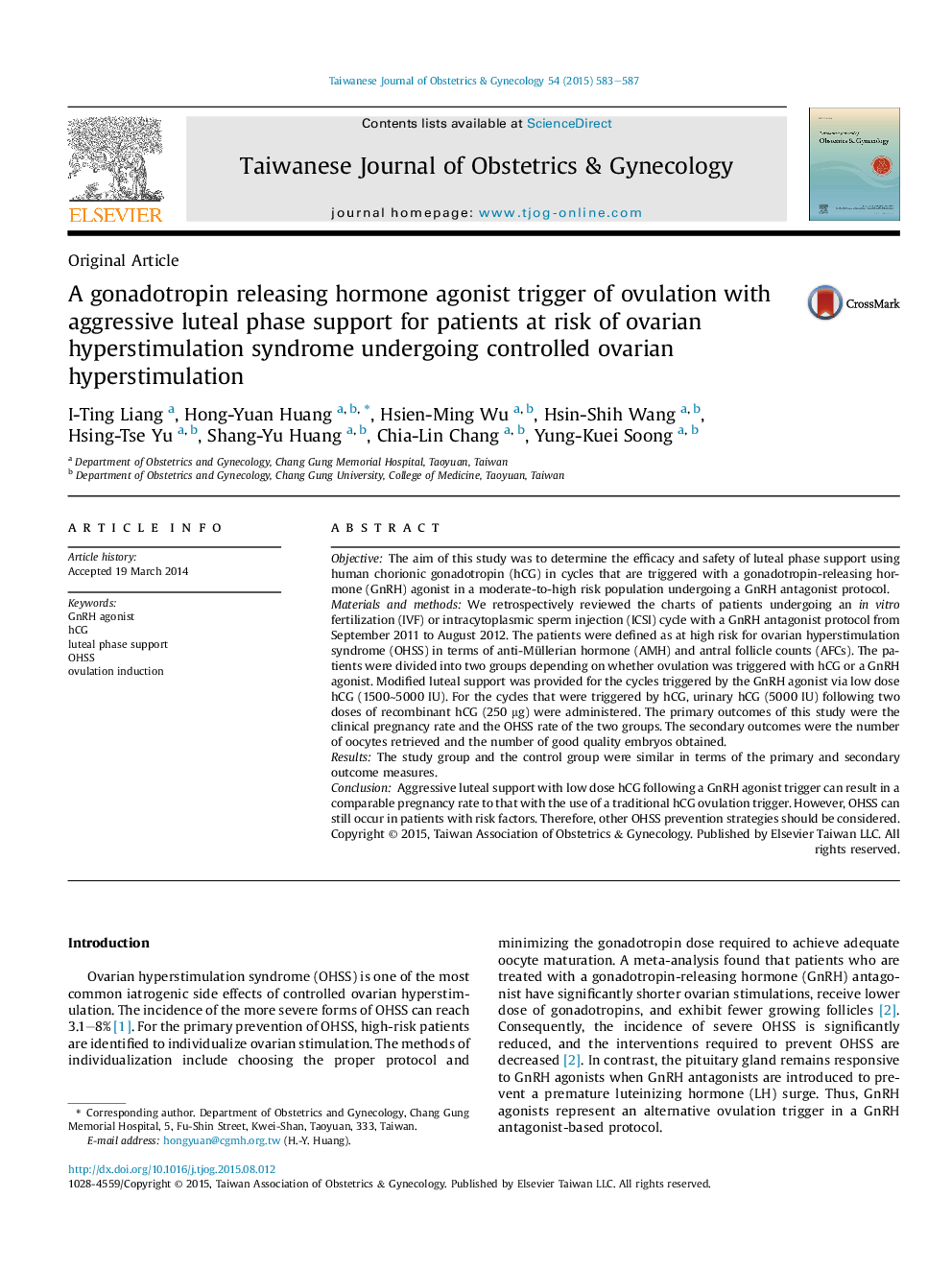| کد مقاله | کد نشریه | سال انتشار | مقاله انگلیسی | نسخه تمام متن |
|---|---|---|---|---|
| 3975483 | 1600970 | 2015 | 5 صفحه PDF | دانلود رایگان |

ObjectiveThe aim of this study was to determine the efficacy and safety of luteal phase support using human chorionic gonadotropin (hCG) in cycles that are triggered with a gonadotropin-releasing hormone (GnRH) agonist in a moderate-to-high risk population undergoing a GnRH antagonist protocol.Materials and methodsWe retrospectively reviewed the charts of patients undergoing an in vitro fertilization (IVF) or intracytoplasmic sperm injection (ICSI) cycle with a GnRH antagonist protocol from September 2011 to August 2012. The patients were defined as at high risk for ovarian hyperstimulation syndrome (OHSS) in terms of anti-Müllerian hormone (AMH) and antral follicle counts (AFCs). The patients were divided into two groups depending on whether ovulation was triggered with hCG or a GnRH agonist. Modified luteal support was provided for the cycles triggered by the GnRH agonist via low dose hCG (1500∼5000 IU). For the cycles that were triggered by hCG, urinary hCG (5000 IU) following two doses of recombinant hCG (250 μg) were administered. The primary outcomes of this study were the clinical pregnancy rate and the OHSS rate of the two groups. The secondary outcomes were the number of oocytes retrieved and the number of good quality embryos obtained.ResultsThe study group and the control group were similar in terms of the primary and secondary outcome measures.ConclusionAggressive luteal support with low dose hCG following a GnRH agonist trigger can result in a comparable pregnancy rate to that with the use of a traditional hCG ovulation trigger. However, OHSS can still occur in patients with risk factors. Therefore, other OHSS prevention strategies should be considered.
Journal: Taiwanese Journal of Obstetrics and Gynecology - Volume 54, Issue 5, October 2015, Pages 583–587